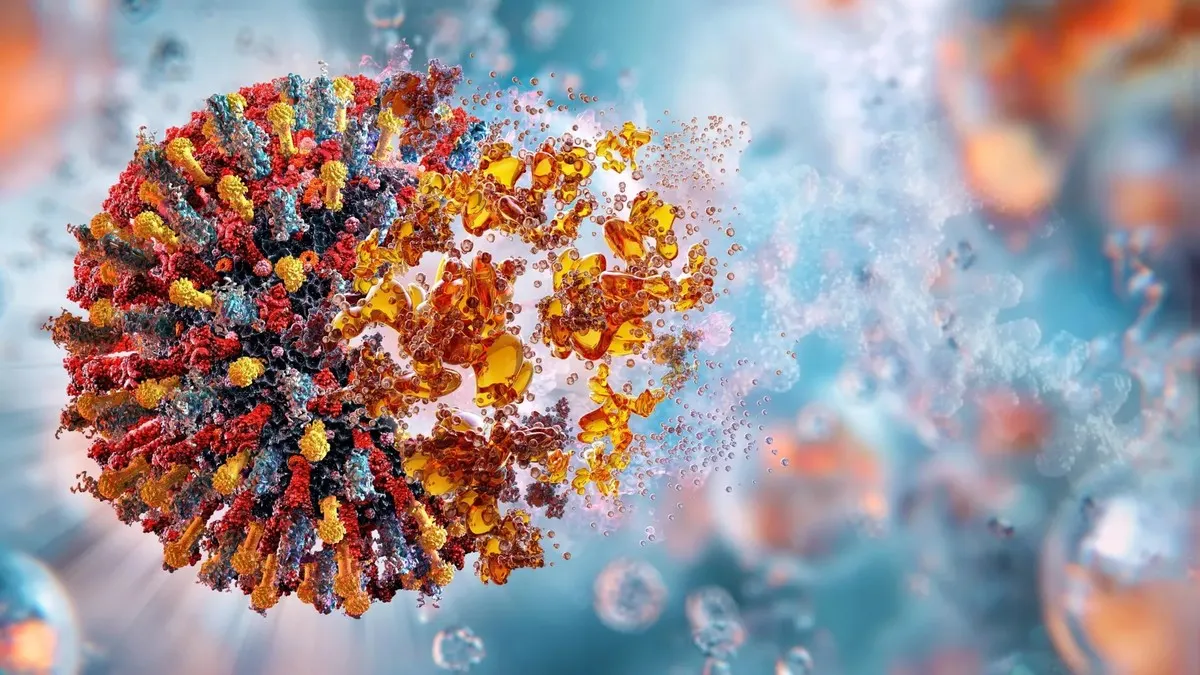16/10/2025
16/10/2025

NEW YORK, Oct 16: Scientists in Massachusetts have developed a promising new “super vaccine” that may offer immunity against cancer before the disease has a chance to form or spread. The experimental jab, tested at the University of Massachusetts Amherst, has successfully prevented multiple aggressive cancer types in mice, including melanoma, pancreatic cancer, and triple-negative breast cancer. Researchers believe this vaccine could potentially work in humans, though it remains in the preclinical stage.
The vaccine uses nanoparticles made of fatty molecules to deliver two adjuvants—substances designed to enhance the immune system’s response. During laboratory trials, up to 88 percent of mice injected with the nanoparticle formulation remained tumour-free, depending on the type of cancer they were exposed to. In addition to preventing tumor formation, the vaccine also reduced—and in some instances, completely stopped—the spread of cancer throughout the body.
Initial experiments involved combining the nanoparticles with an antigen that activates the body’s immune response to cancer. Mice that received the jab were then exposed to melanoma, a tumor that can spread aggressively to other organs. Results showed that 80 percent of vaccinated mice remained tumour-free and survived for 250 days. In comparison, all mice that received either traditional vaccines or no vaccine developed tumors and died within 35 days. The study also found that the nanoparticle vaccine was effective at preventing cancer from metastasizing to the lungs, unlike in unvaccinated mice.
Following the success of the first trial, the research team tested a second version of the vaccine, this time using nanoparticles combined with tumor lysate—material derived from cancer cells—as the antigen. These mice were exposed to melanoma, triple-negative breast cancer cells, and pancreatic ductal adenocarcinoma (PDAC), the most common form of pancreatic cancer. The results were again highly encouraging: 88 percent of mice exposed to pancreatic cancer, 75 percent exposed to breast cancer, and 69 percent exposed to melanoma remained tumour-free.
The principle behind the vaccine is grounded in the way traditional vaccines work. Vaccines contain two main components: the antigen, which is a part of the disease-causing organism—in this case, cancer cells—and the adjuvant, which activates the immune system to recognize and eliminate the antigen as a threat. According to experts, while cancer vaccines are a growing frontier in medical research, achieving reliable effectiveness and potency has historically posed a significant challenge. However, the new study shows promise in overcoming these hurdles.
Notably, mice that remained tumour-free after receiving the vaccine also showed strong resistance to developing secondary tumors when re-exposed to cancer cells.
Dr. Prabhani Atukorale, assistant professor of biomedical engineering at UMass Amherst and lead author of the study, had previously demonstrated that her nanoparticle-based treatment could shrink or eliminate tumors in mice. The latest research, published in Cell Reports Medicine, reveals that this approach can go a step further—by preventing cancer from forming in the first place. According to the researchers, the vaccine platform could potentially be adapted for a wide variety of cancer types, not just the three examined in this study.
While the team is focused on eventually developing the treatment for human use, they emphasize that their work is still in its early stages. To help advance the technology, the scientists have formed a startup called NanoVax Therapeutics, with a mission to improve patient outcomes through nanoparticle-based treatments.
Co-author Griffin Kane of UMass Amherst told 404 Media that while the early results are “super exciting,” translating the success from mice to human trials is a complex and humbling process. “The results that we have are super exciting, and we’re really looking forward to pushing forward to the next steps,” Kane said. “But I think that the translation of these types of therapies from preclinical mouse models to the clinic is a very humbling experience for a lot of people and teams.”
The study adds to growing optimism that nanoparticles could revolutionize healthcare and cancer treatment. Just days earlier, researchers in Barcelona revealed that they had successfully used nanoparticles to reverse Alzheimer’s disease in mice. Their work focused on restoring the blood-brain barrier, which is often compromised by toxic protein buildup in neurodegenerative conditions.
Commenting on the broader implications of nanotechnology in medicine, Kristin Omberg, a biologist at the Pacific Northwest National Laboratory who was not involved in either study, said the potential is transformative. Writing for The Conversation, Omberg stated that nanoparticles “will change the world.” She added that in the future, nanotechnology could not only help doctors treat brain diseases, cancer, and dementia more effectively but also open the door to human performance enhancements—from sharper vision to enhanced physical abilities in military settings.
While the timeline for a human-ready cancer vaccine remains uncertain, the findings from UMass Amherst suggest a significant step forward in cancer prevention, offering renewed hope for more effective, long-lasting therapies in the future.


